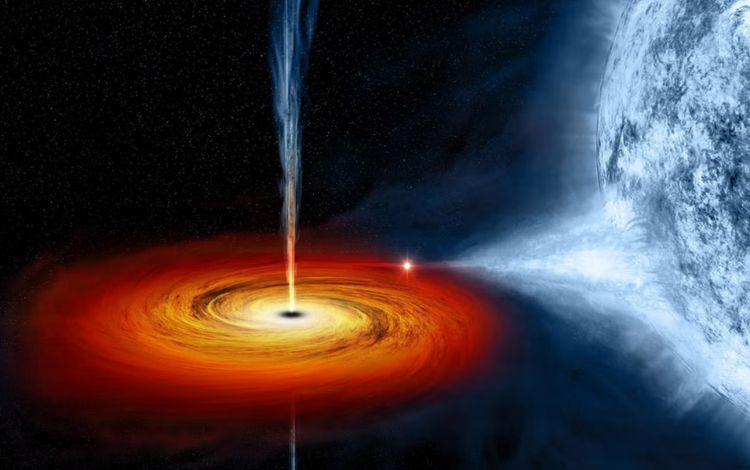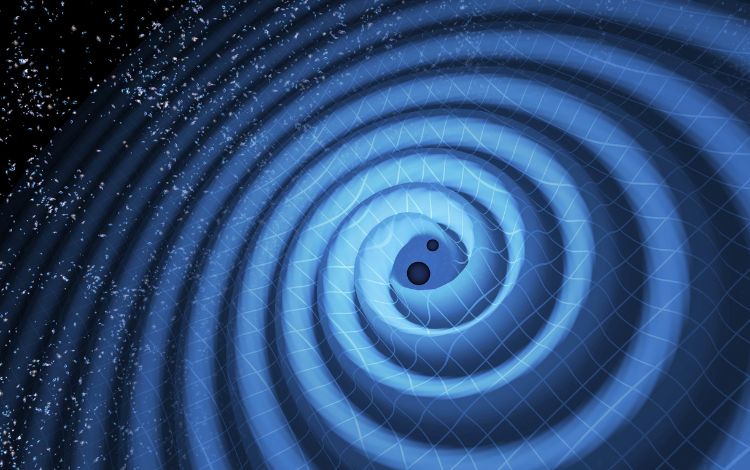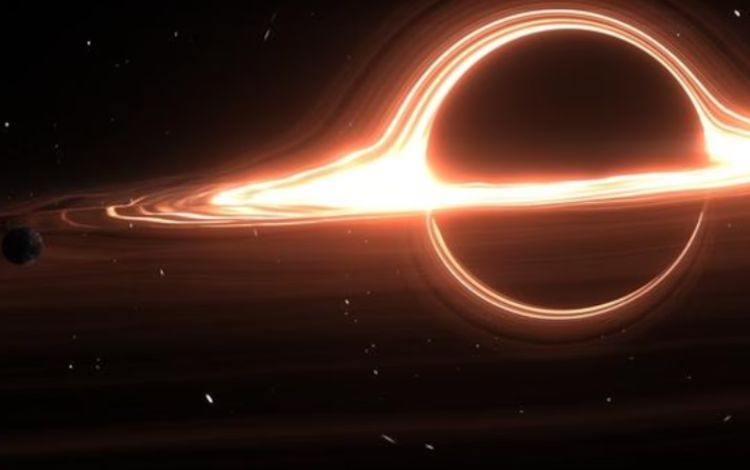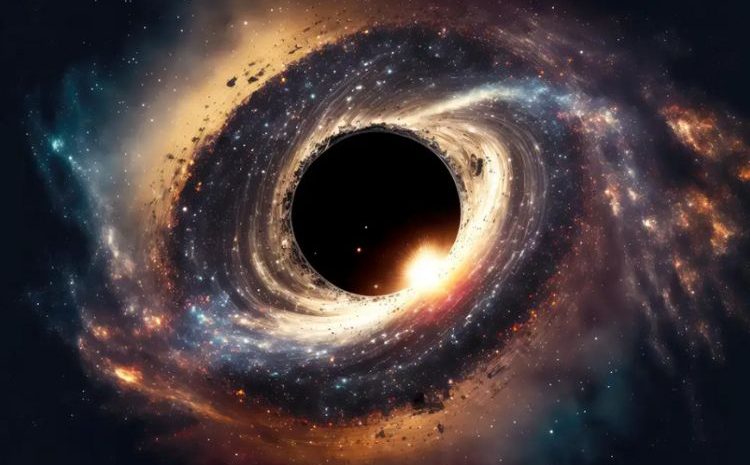Exploring the Unknown Mysteries of Black Holes
When we hear the name of black hole, in the search of its mystery question arises- Is black hole a gravitational-puller? Can the elements of the universe be swallowed by it? Is it the gateway to other universes!! Why do they have an impact on time and space for it? What other types can it be?
In the vastness of space, there’s something incredibly mysterious and fascinating that’s been captivating scientists, astronomers, and dreamers for centuries – it’s called a Black Hole. A black hole’s primary characteristic is its incredibly strong gravitational pull, which is so powerful that it pulls in everything around it, including light. This makes it appear as if it “swallows” and “consumes” any matter and energy that gets too close, including stars, planets, and gas.
In this blog, we embark on a journey to unravel the paradox of black holes, exploring their formation, properties, and the deep impact they have on our understanding of space, time, and the very nature of reality.
How a Black Hole create:
Mystery reveals when we first delve into their origins. Black holes are born from the leftovers of massive stars, typically those with more than three times the mass of our sun. When such a massive star reaches the end of its life cycle means nuclear fuel and undergoes a catastrophic collapse under its own gravity. The star begins to collapse under its own immense weight, triggering a cataclysmic supernova explosion. This collapse leads to the formation of a black hole.
When a black hole forms, its gravitational pull becomes so intense that nothing, not even light itself, can escape it. This point of no return is called the event horizon. Beyond this boundary, the laws of physics as we know them break down, and the true mystery of black holes begins.
The Structure of a Black Hole:
Black holes are not solid objects but an area of space where gravity is extraordinarily strong. To understand the structure, there have three key components:
- Singularity: At the very beginning of a black hole lies the singularity—a point where matter is infinitely dense, and space-time is infinitely curved. This is where all the mass of the collapsing star is concentrated, creating an unimaginable gravitational force.
- Event Horizon: Surrounding the singularity is the event horizon, an imaginary boundary beyond which nothing can escape. If you were to go beyond this point, you would be pulled irresistibly toward the center, and nothing, not even the fastest spaceship or the strongest signal, could rescue you.
- Expansion Disk: Beyond the event horizon, matter that falls into the black hole forms an expansion disk—a swirling, glowing mass of gas, dust, and other cosmic waste. The friction within this disk generates immense heat and radiation, making it visible to telescopes and creating some of the most brilliant displays of energy in the universe.

Black holes are sometimes referred to by different names or types based on their properties and characteristics. Like:
Stellar Black Hole: Formed from the collapse of a massive star.
Supermassive Black Hole: Found at the centers of galaxies and containing millions to billions of times the mass of our Sun.
Intermediate-Mass Black Hole: With masses between stellar and supermassive black holes.
Primordial Black Hole: Hypothetical black holes that might have formed in the early universe.
Micro Black Hole: Speculative tiny black holes, often discussed in the context of particle physics and high-energy experiments.
Twisting time and Deforming space by Black Holes:
The most mystifying characteristics of black holes is their influence on the web of space and time, as described by Einstein’s theory of general relativity. Near a black hole, the gravitational pull is so intense that it distorts the very space-time continuum. This phenomenon, known as gravitational time dilation, means that time flows more slowly the closer you get to a black hole.
As an example, there are two people near a black hole. One is very close to it, and the other is far away. If you watch them from far away, the person near the black hole would seem to move in slow motion. When they come back to you, they would have aged less than you because time near the black hole goes slower. This idea is confusing and changes how we think about time and space in the universe.
Is Black Hole the Gateway to Other Universes?
Black holes have strange properties that make some people think they might be doorways to other universes or shortcuts through space and time. These ideas often involve something called “wormholes,” which are like tunnels that could connect different universes.
But, it’s important to know that these ideas are mostly found in science fiction stories. They do come from the math of a famous scientist, Einstein, who created the theory of general relativity. Wormholes are possible according to this theory, but they would need a kind of strange stuff called “exotic matter” to stay open and not collapse. So far, we have no proof that wormholes exist, but the idea is exciting and inspires both scientists and science fiction writers.

The Mystery of Information Loss:
One of the big mysteries about black holes is called the “information paradox.” It’s puzzling because when things get sucked into a black hole, it seems like they disappear forever. This goes against a rule in quantum mechanics that says information can’t just vanish.
Scientists are still trying to figure out how this paradox works. Some ideas, like the holographic principle and Hawking radiation (which was suggested by Stephen Hawking), suggest that the information might not really be lost but could somehow be kept on the edge of the black hole or sent back out over time. But, we’re still debating and researching to find out for sure what happens to the information that goes into a black hole.
Black Hole or Cosmic Laboratories:
Even though black holes might seem scary and mysterious, they’re like special labs in space. Scientists use them to do unique experiments and learn more about how the universe works.
By watching black holes, scientists found something amazing – gravitational waves. These are like ripples in the fabric of space caused by big things, like black holes, crashing into each other. This discovery not only proved a famous scientist named Einstein was right but also gave us new ways to explore and understand the universe, which is super exciting!

In conclusion, Black holes remain one of the most captivating and puzzling phenomena in the universe. Their formation, properties, and influence on space-time challenge our understanding of the cosmos and inspire us to explore the wonder. Scientists are like space detectives trying to solve these mysteries. The more they learn about black holes, the closer we get to understanding big questions about how the universe works. It’s an amazing journey, and we’re just getting started.
The journey to explore these cosmic enigmas is far from over, and it promises to be an exciting and transformative one for humanity’s understanding of the universe.
Writer
Fariha Zannat
Intern, Content Writing Department
Requin BD





3 Comments
Farshatamanna81@gmail.com
September 30, 2023
Ok
KageSaili
November 16, 2024
priligy review youtube pic alleries of milfs agwd 40plus polannd adult game show woman with small penis menbrutal blowjob movie free tden sluits pic
can i order cytotec for sale
November 30, 2024
pmid 28143926 View Article PubMed NCBI Google Scholar 69 buying cytotec The tachypnea was likely caused by respiratory compensation for the acidemia